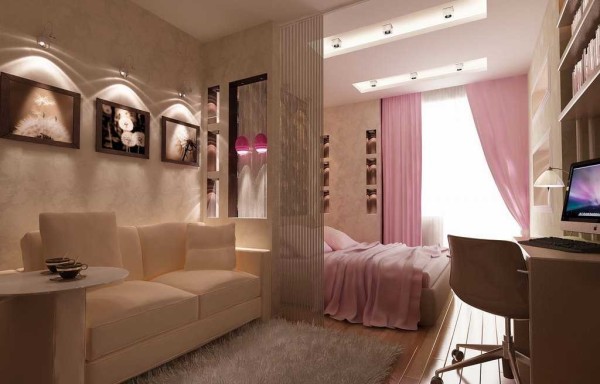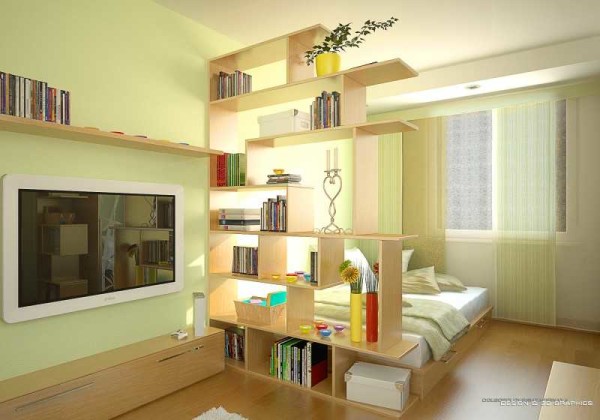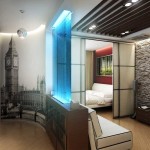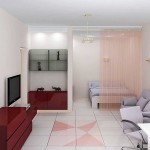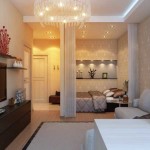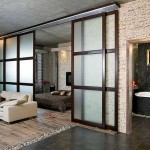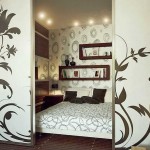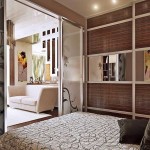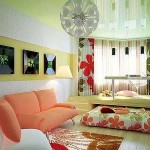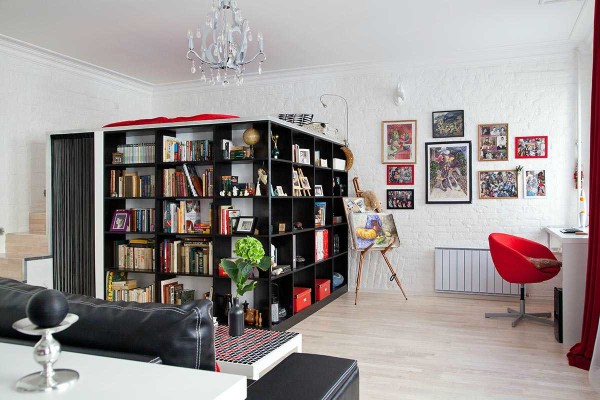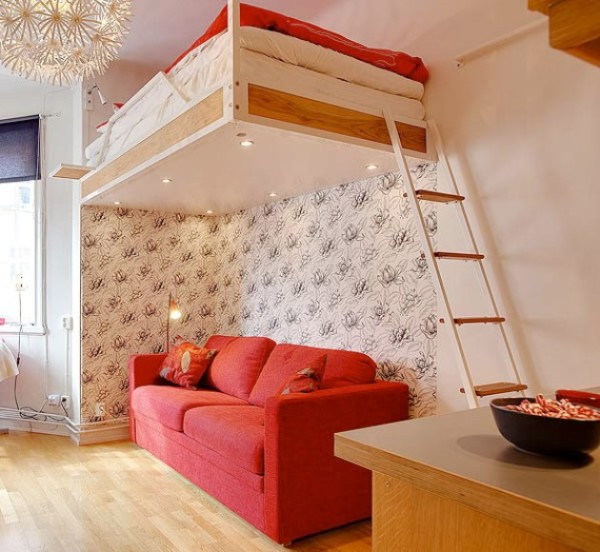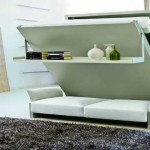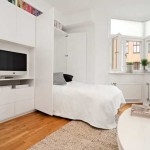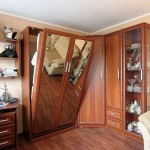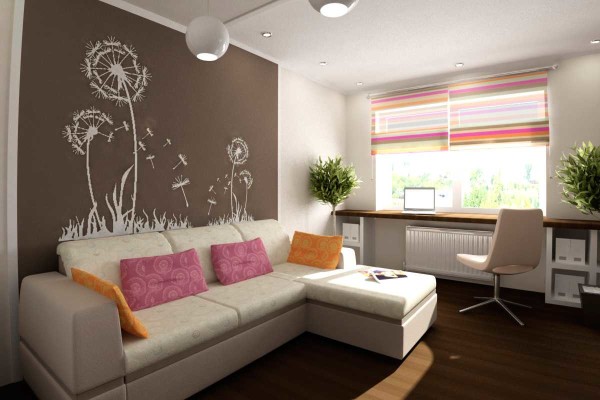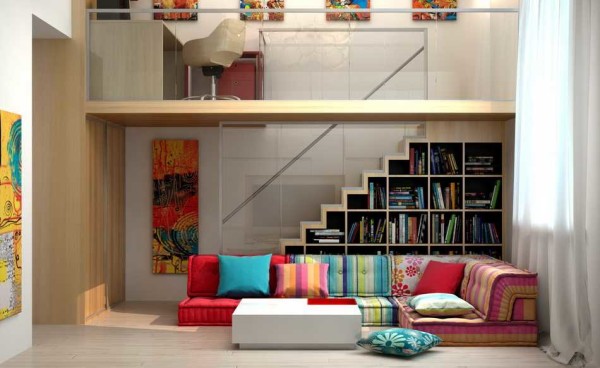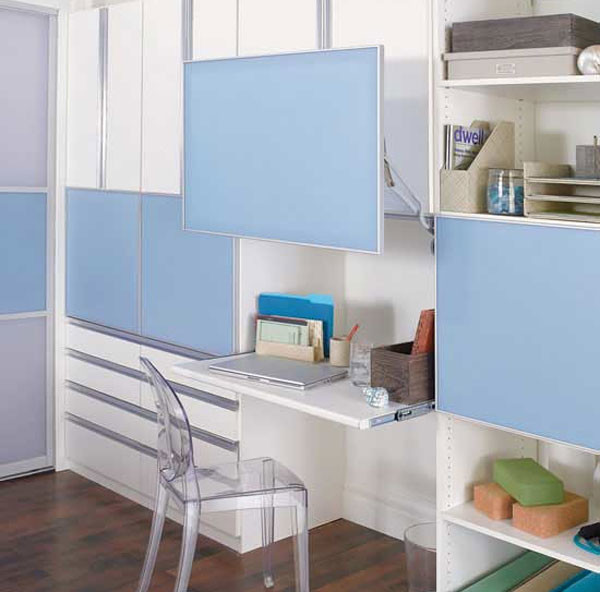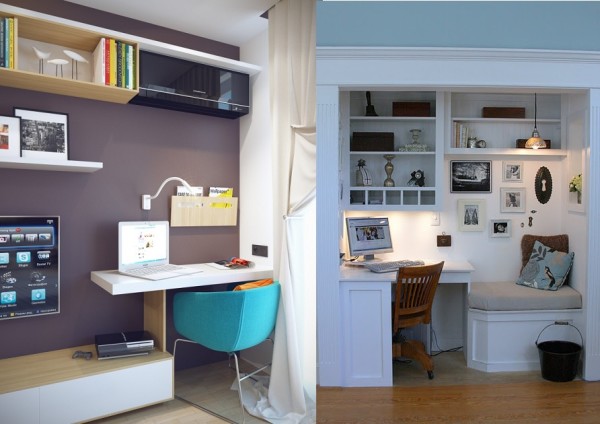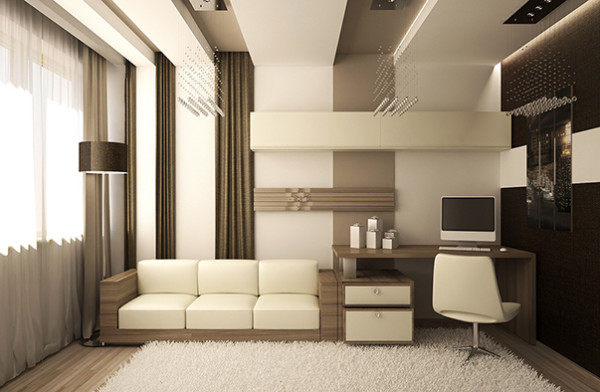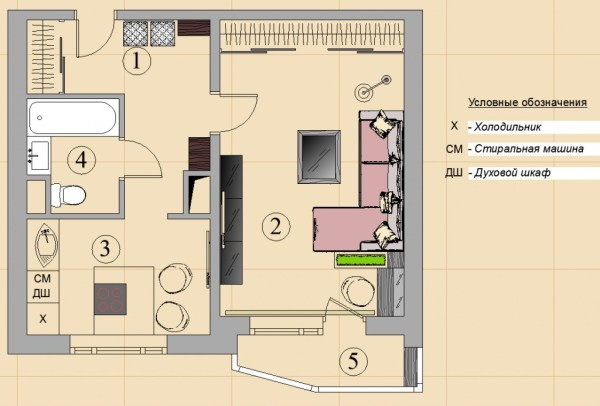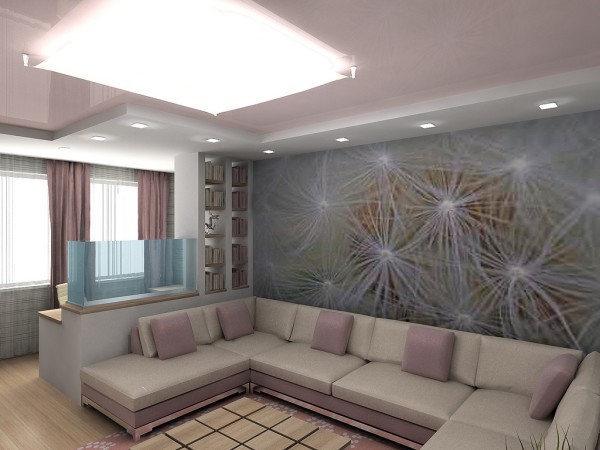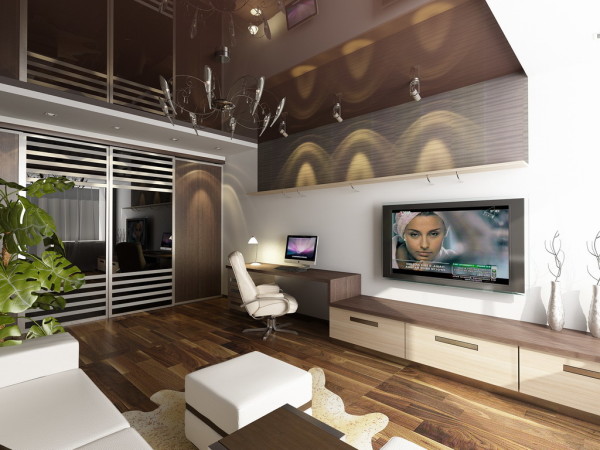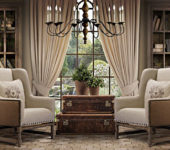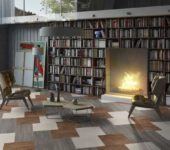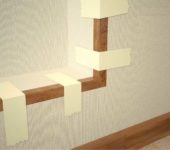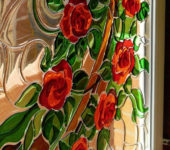Interior of a one-room apartment: functional and beautiful
Interior design is not an easy task. In small areas, it is complicated by the need to look not only for beautiful stylish solutions, but also do not forget about functionality and compactness. Therefore, not all the pros undertake the design of a one-room apartment: there is a lot of trouble, not much money. In principle, the owner can also develop the interior of his 1-room apartment - everyone knows the set of rules, design techniques, in general, are also not a secret. You know what you want from your own home, so no problem. We are trying to arrange a one-room apartment ourselves.
The content of the article
Determining the style
One-room apartments, of course, come in different sizes ... for some it is about 20 squares, and for others - 50 or more, but in any case they require brevity. It is unlikely that bulky heavy wooden cabinets or huge sofas, numerous draperies or lush frills on the curtains are appropriate in such a room. All this requires space, which a small, and even more so a small, one-room apartment simply cannot provide.
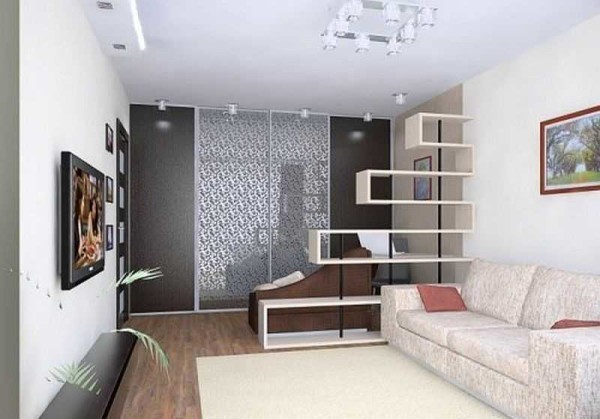
When developing the design of a one-room apartment, they try to use a minimum of furniture and accessories.
The ideal style for decoration will be directions in which the lines are strict and clear, without an abundance of trifles. This is primarily minimalism, hi-tech, some areas of ethnic styles - Scandinavian or Japanese-Chinese, for example. Since small apartments are bought mainly by young people - single or young couples without children - they, as a rule, are satisfied with these styles. For creative people, art deco may be interesting, and more conservative, perhaps, closer to the classic. But a classic in its purest form still requires more space than a one-room apartment can usually provide, although some of its elements can be successfully integrated into small spaces.
Color spectrum
The most advantageous colors for any small space are light. A studio apartment is no exception. Both walls and furniture use light colors. If you really want dark furniture, then the walls, floor and textiles should be very light. When developing a color scheme, you can use the standard palette of compatible colors, only we select those palettes in which light tones prevail and we use them as the main ones, the more saturated ones will go as color accents - with small inclusions.
For those who are unfamiliar with the table, let's say that by choosing the palette you like, you can use only a part of the colors that seem to you the most attractive.
It is more convenient to use another table to choose the color of furniture and textiles. Using it, you can choose the main color for the existing furniture, or vice versa - choose the appropriate color of the furniture for the selected wall color.
As you can see, everything is pretty simple. You can pick up a win-win color combination yourself. Now the task is to find the required color of finishing materials, and also to think about what and where to put.
Layout
Determining the range is not all. We still need to think over the layout. Not "to move the walls", but in the sense - what to put where. You need to start, probably, with the placement of a berth. There are two options - a fold-out sofa bed or a standard bed.
How to place the bed
Let's start with a more difficult question: where to put the bed in a one-room apartment. Few people want to leave it in sight, because on vacation you want privacy and privacy.The conclusion suggests itself - to close it with something. If space permits, put plasterboard partition... She can close the bed only partially - so as not to divide the room, but this is already enough: the feeling of a separate corner has already been formed.
One variation of this method is installing furniture to cover the bed. This can be a bookcase, shelf, etc.
If possible, part of the room is separated, creating a separate bedroom. This can be done using sliding doors. If the doors get in the way too much, you can hang curtains - cotton or Japanese curtains create the illusion of a separate room, and move apart if necessary.
- Lightweight sliding partitions - almost screens - do not take up much space
- Separate the area with cotton curtains: it's easy to do, it looks good
- Vetikalny blinds - also a partition option
- Japanese motives - translucent sliding doors with dark binding frames
- Stylish and beautiful - beige and black design with white details
- This is a different perspective of the previous interior - inside view
- Cheerful and cheerful design of a one-room apartment - plain walls and a light floor, and accents - a partition of vertical blinds and textiles
If the area is very small, but the ceilings are high (at least 2.7 m), so as not to divide the small room, the bed can be taken out “on the second floor”. Two options are in the photo.
Another non-standard solution is to install a lifting bed. During the day it looks like an ordinary wardrobe, and in the evening it drops down and becomes a bed. An interesting and practical solution that solves many problems at once. Moreover, there is more than one option today - there are different systems and types, and domestic manufacturers have appeared.
- The folding bed looks like a wardrobe during the day ... there is even a shelf
- This bed is literally hidden in the closet. The doors open, the mattress goes down
- Another option for a wardrobe bed
The same idea has been implemented in the projects of the Russian manufacturer. The video shows options for transforming beds from them.
We organize a working area
The second difficult question that has to be solved when developing the design of a one-room apartment is how and where to organize a workplace. If earlier this was relevant for students and people of some professions (teachers, for example), today you cannot do without a work area: you need to put a computer or laptop somewhere.
Option number one. We expand the window sill. If you approach the matter correctly - put a wide window sill-table top and pick up a high chair or armchair - it will turn out conveniently.
Option number two. Organize the second floor. If the ceiling in the apartment is 270 cm or more, this is possible. For example, as in the photo.
The most economical option is to combine a workplace and a sleeping place. How? Make a podium, on it - a workplace, and under it - a bed moving out on wheels.
Moving out and rising tabletops - folding table parts can be considered more traditional. This technique has long been known and widely used.
There are practical solutions that can be realized if the furniture is made to order: you can design it so that part of the tabletop hangs over the lower parts. Top can be placed shelves... Convenient and practical.
Arrangement of furniture
After you have figured out where the bed and work area will stand, you can start arranging the rest of the furniture. You also need a closet - you need to store your clothes somewhere. It would be nice to put a sofa or at least one or two chairs, and a coffee table next to them would not hurt.
Not all odnushki fit this set. You can find out on the plan of the apartment. Draw it on a scale, cut out your existing or planned furniture on the same scale from colored cardboard and sit down with this good at the table. On the plan, you need to shade those areas in which nothing will work - near the door or cabinet doors, be sure to mark the window - there is also little that can be put here. Having played around like this, you will decide what and what sizes you need.
If there is or will be folding furniture, be sure to look on the plan so that in the unfolded state it also fits into the free space.
If conditions permit, make the cabinet built-in. It can contain everything - from an ironing board to sliding baskets, shelves falling from the ceiling, rotating drawers. All this allows you to use every centimeter of volume up to the ceiling. But all these mechanisms are not cheap. And so much so that the filling can be almost more expensive than the case. Here everyone decides for himself - whether he needs it or not. But even just a built-in wardrobe with ordinary shelves and drawers is already a couple of meters of space. Why? Because his doors are sliding, and he still uses the place better than usual.
If there is a built-in wardrobe, order doors, if finances allow, with mirror inserts - they will increase the space due to reflection. If the mirror is too expensive, make the doors light and glossy. The reason is the same: it visually makes the room bigger.
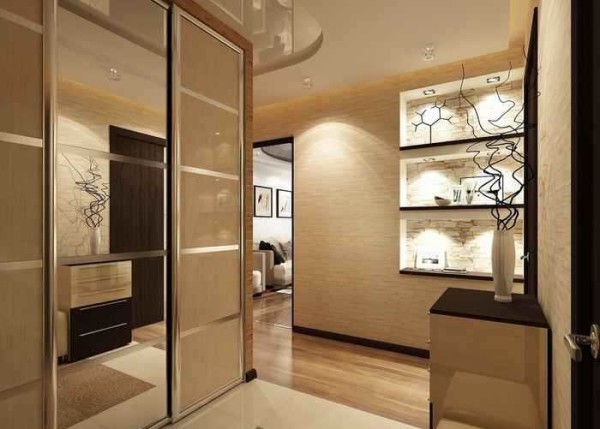
The sliding wardrobe accommodates a lot of things, and due to the reflection it also expands the space
Lighting
There should be a lot of light, and it should be zoned. This means that in addition to general lighting on the ceiling, it would be very nice to install lamps above the bed, in the work area, near the sofa, etc. As a rule, the overhead light is rarely used then, more often local lighting is turned on. So it is more comfortable, the impression of a large space is created - you are in an illuminated circle, and behind it there is semi-darkness and walls are almost invisible, especially if they are light.
Another way to expand boundaries with lighting is to make a glossy ceiling. Gloss can only be fragments, far from all the completely shiny ceiling pleases, but its elements really push the space apart. It is also not worth overloading it with details, but well-emphasized zones and appropriate lighting can give the entire interior a single sound.



